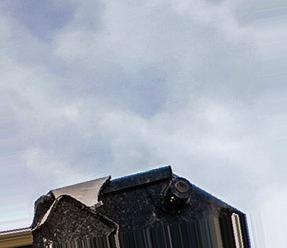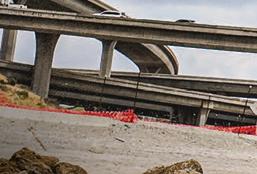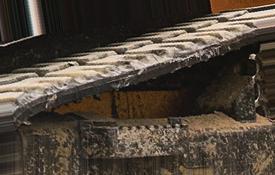



















By
The I-5 Corridor in northern San Diego County is a busy area with overlapping transportation modes designed to benefit travelers, consumers and residents.
SANDAG (San Diego Association of Governments), working with Caltrans, is seeking to enhance convenience and efficiency in the area by rebuilding a 308-ft. bridge over Batiquitos Lagoon. The bridge will be double-tracked as part of the 0.6-mi. expansion enabling both passengers and freight to travel quicker and more efficiently than the aging single-track bridge currently in place.

The contractors on the $166 million project are Flatiron, Skanska and Stacy and Witbeck.
Stephen Fordham, senior engineer, is supervising the project for SANDAG.
“The old bridge was built in the 1940s and consists of 22 spans each 14-feet apart supported by timber piers constructed of wooden piles,” he said. “The piles, similar to a wooden telephone pole, support the existing rail bridge over the lagoon. “As a single-track bridge, trains sometimes have to wait for a train to pass by in the opposite direction before proceeding over the bridge. Now,
when the new bridge is built, traffic will be able to move both northbound and southbound simultaneously.”
Nearly 400,000 vehicles are shipped into the nearby Port of San Diego.
“When the bridge is finished, it will assist with reducing the creation of greenhouse gases,” Fordham said.
“Shipping the cars by freight is more cost-effective than by truck. The new double track, which will support more reliable service and could also draw more commuters to travel by rail rather than by car, potentially providing more environmental savings.”

Global construction and development firm Skanska and infrastructure company FlatironDragados were awarded the construction contract by Los Angeles World Airports (LAWA) for the structures and utilities work on the Airfield and Terminal Modernization Program (ATMP) Roadway Improvements Project at Los Angeles International Airport (LAX).
To date, the Skanska FlatironDragados joint venture (JV) was awarded $604 million for preconstruction and construction work, which constitutes part of the overall estimated $1.5 billion budget for the project.
The project serves as a key component to the broader modernization at LAX ahead of the 2026 World Cup and 2028 Summer Olympics.
The improvements made will improve the passenger experience for both Angelenos and visitors and create more efficient ground transportation systems that are able to support the traffic volume served by major international transportation hubs like LAX.
The overall ATMP project focuses on airfield and terminal improvements that stay within the airport’s existing footprint and roadway improvements that help reduce airport-related congestion and back-ups on public streets. The project includes traffic monitoring upgrades that will reduce vehicle-waiting times and related exhaust emissions.
“Skanska is proud to announce that we

are building the ATMP project at the Los Angeles International Airport. In a joint venture with FlatironDragados, we are collaborating with LAWA and the surrounding community to make major improvements to the way people access of one of the world’s largest airports,” said James Bailey, executive vice president of Skanska USA Civil’s West Coast operations. “From detailed
designs of more than 4 miles of reconfigured roadway to bridge construction and modifications to traffic signals, the delivery of this lasting infrastructure will change the way people get to and from LAX.”
“We, along with our JV partner Skanska, are looking forward to building this new project with LAWA at LAX. Collaborating on the construction of the ATMP project
will make travel and transit more efficient, faster and safer in and around the airport,” said Dale Nelson, executive vice president, FlatironDragados. “Our work will not only support the airport’s modernization, but benefit local residents and communities by reducing congestion, improving safety, and leaving behind infrastructure for the region well beyond the Olympics.”
Gov. Gavin Newsom
announced Oct. 17, 2025, nearly $5 billion to improve safety and mobility on local streets and state highways, as well as fund new alternative transportation options and zero-emissions projects.
More than half of the allocation will provide 600 local governments and regional transportation agencies with their annual funding to fix roads, bridges and other transportation needs statewide.
“California is investing in itself — in our communities, our people, and the places we drive, walk and ride every day,” Newsom said. “We’re making our roads safer, our commutes smoother and our transportation system cleaner and more connected.”
Another $140 million will fund truck climbing lanes among other improvements to Interstate 80 in the Sierra foothills between Applegate and Emigrant Gap, a major West Coast freight thoroughfare.
“This nearly $5 billion investment highlights California’s strong commitment to creating a modern, resilient transportation system that enhances local streets and strengthens connections between neighborhoods, job centers and schools,” said Toks Omishakin, California transportation secretary. “Thanks to Governor Newsom’s leadership, Caltrans’ work and the commission, we are building a safer, more connected and future-ready transportation network that serves all Californians.”
Pedestrian facilities also
Among the projects approved is $700 million for repairs and critical upgrades needed for the Vincent Thomas Bridge, a 60year-old span in the Port of Los Angeles that will soon undergo a major deck refurbishment.
received support from the allocations, including an award of $97 million to replace a pedestrian bridge that connects neighborhoods south of the City College of San Francisco campus and other improvements to Interstate 280 between San Francisco and San Mateo counties.
And $6.3 million will be spent on new sidewalks, bike lanes and traffic controls in the cities of Santa Barbara and Santa Rosa and in Santa Clara County.
“Our local partners are steadfast contributors and valued partners in keeping California’s vast transportation network safe and efficient,” said Dina El-Tawansy, Caltrans director. “When added to the various highway projects also approved, this month’s action ensures that hundreds of essential improvements in our cities and neighborhoods will better enable people and goods to flow through-
out the state and beyond.”
“The commission is committed to ensuring that California’s transportation system is safe and reliable for everyone who uses it,” said Tanisha Taylor, California Transportation Commission executive director. “Today’s nearly $5 billion investment in projects will improve multimodal access to schools and employment centers, boost our growing economy and reduce out-of-pocket expenses for all Californians.”
Other notable projects include:
• $10 million to build a floating charging station for zero-emission ferries in San Francisco Bay;
• $9.7 million to buy electric buses for use around the University of California, Los Angeles campus; and
• $8 million to restore firedamaged irrigation systems and landscaping near Lake Forest in Orange County.
Of the total allocation this month, $470 million comes through Senate Bill (SB) 1, the Road Repair and Accountability Act of 2017, and $4.2 billion from the federal Infrastructure Investment and Jobs Act. The larger-than-normal funding relates almost exclusively to the annual allocation provided to local governments and regional transportation agencies.
California is expected to receive nearly $42 billion in federal infrastructure funding over a span of five years. These investments will upgrade the state’s roads, bridges, rail, public transit, airports, ports and the electric vehicle charging network.
SB 1 has invested approximately $5 billion annually toward transportation projects since 2017. It provides funding split between the state and local agencies.
































































































The latest phase of the Golden Gate Bridge’s seismic retrofit — a process that began nearly 30 years ago — is about to begin, according to the Golden Gate Bridge, Highway and Transportation District.
Phase 3B is estimated at $879 million and will be funded using a combination of federal, state and district funds. It will take approximately six years to complete, with construction slated to begin in 2026.
Halmar International is heading the pre-construction as the construction manager/general contractor. The transportation district is expected to hire a construction contractor by year’s end.
The seismic retrofit measures for these phases consist of strengthening foundations, the installation of micropiles and rock bolts, the construction of reinforced concrete shearwalls, the replacement of the housing roof/roadway deck with a pre-cast concrete slab-on-steel stringer deck system involving nighttime lane closures and other structural modifications.
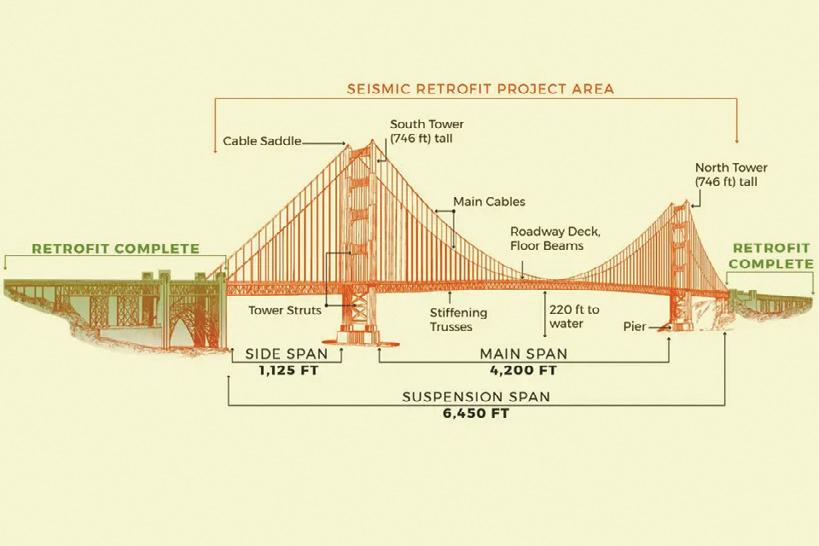
The bridge is only approximately 6 miles from the San Andreas Fault, according to sfgate.com.
After the bridge was damaged in 1989 by the Loma Prieta earthquake, the transportation district determined that the bridge needed to be retrofitted to protect its structural integrity from future major earthquakes. That led to the Golden Gate Bridge Seismic Retrofit Construction Project, which continues to this day.
The first construction phases saw the district focus on strengthening the bridge’s most vulnerable parts, which included the north approach viaduct, the south approach viaduct, the Fort Point arch and the south and north anchorage housings, sfgate.com reported.
The latest stage will include strengthening the suspension bridge and the two 746-ft. tall towers by adding steel plates. It also will reinforce the trusses and floor beams and install energy dissipation devices for shock absorption.
In addition, the south tower will receive a coat of its iconic orange paint and the existing lead paint will be abated, sfgate.com reported.
The total cost to finish the retrofit is expected to be approximately $1.8 billion, according to sfgate.com.
The district has said that it has secured nearly half the funding to begin. District spokesperson Paolo Cosulich-Schwartz told sfgate.com that the project’s next phase is paid for by a $400 million federal grant, $200 million from Caltrans’ Highway Bridge Program and $270 million from the district’s reserves.
A final phase will retrofit the bridge’s main 4,200-ft. long span.
To address statewide construction needs and build equity in the workforce, the California Department of Industrial Relations (DIR) and its Division of Apprenticeship Standards (DAS) announced on July 30, 2025, $20 million in new California Apprenticeship Council (CAC) Training Funds.
This funding will go to support apprenticeship training in the building trades.
“California has been analyzing how best to grow the building trades workforce to meet the state’s critical infrastructure requirements,” said Adele Burnes, DAS chief. This funding will be vital to expanding pathways for apprentices to advance their careers while simultaneously meeting industry needs.”
The announcement is a nearly sevenfold increase in apprenticeship training funding compared to prior budget years. This support is a fundamental component in growing California’s construction workforce.
It allows apprenticeship programs to boost training, invest in essential equipment and increase recruitment, as well as develop curriculum and provide instructor training to stay ahead of shifts in the industry.
The funds will be awarded through a for-

mula process. Programs that have been training and supporting apprentices in the building trades in public works projects will be eligible to apply for reimbursement of training costs. Applications opened in September.
Priority will be given to programs that actively serve public works projects, while demonstrating a commitment to high-quality and inclusive training, constructionowners.com reported.
“This is about creating real, debt-free
career opportunities for Californians while ensuring we have the workforce needed to deliver the infrastructure our communities depend on,” said Burnes, according to constructionowners.com.
The announcement noted that one component of Governor Gavin Newsom’s Master Plan for Education focuses on creating different pathways that do not necessarily rely on a four-year college degree. Apprenticeships in the building trades are a debt-free option and can lead to stable jobs with family-sustaining wages, the announcement said.
With California leading the way in apprenticeship programs nationwide, Newsom aims to serve 500,000 apprentices by 2029.
DIR, DAS and the Labor Workforce Development Agency (LWDA) created a five-point action plan to advance apprenticeships in California. Expanding access to equitable building trades apprenticeships is a fundamental component of the plan.
DAS consults with employers to develop a skilled workforce by establishing innovative apprenticeship programs that offer training to create viable pathways for Californians.
For details, visit dir.ca.gov.


The SANDAG team built a temporary work trestle across the lagoon to support the cranes and heavy equipment, which is a vital part in the construction of the new bridge. This temporary work trestle also allows train traffic to continue across the current bridge without interruption to train operations while the adjacent new bridge is constructed.
The new bridge will be 336 ft. in length and will be supported by five sets of six cast-in-steel-shell piles (CISS) and two new bridge abutments totaling six spans. Each span consists of four precast concrete girders 56 ft. in length.
The construction team used pile-driving rigs to drive the CISS piles into the lagoon bottom to support the bridge. Each of the 42 CISS piles is constructed of 1-in. thick rolled steel and is formed into 3-ft. diameter tubes. The piles were driven approximately 120-130 ft. into the lagoon bottom to support the new bridge.
The upper portion of each pile will hold epoxy-coated rebar and will be filled with concrete, followed by a concrete pier cap and the precast concrete girders. A total of 24 girders were placed, each 56 ft. in length 7 ft. in width and 4 ft. in depth. Once the bridge is in place, it will be covered with decking and railroad ballast rock; then, the railroad ties and rails will be set in place.
The project is under the permit guidance of both the United States and California departments of Fish and Wildlife. The lagoon is home to two productive least tern nesting sites, and SANDAG, in following the permit guidance, scheduled the construction activities to account for this annual breeding season by significantly limiting construction activities between April and September each year.
More importantly, the project is rehabilitating one of the two least tern nesting sites that was eroded by wave and tidal activity.
SANDAG also will be placing approximately 50,000 cu. yds. of large boulders around the two bridge abutments to protect the bridge from constant wave and tidal action. A portion of the existing rock slope protection used on the existing bridge will be reused for the new bridge.
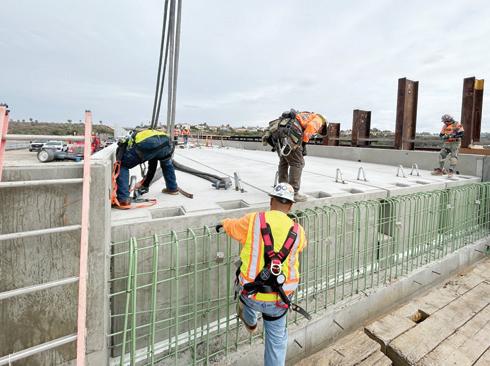
In addition, with the placement of the new rock slope protection, some sand excavated from the lagoon will be used for beach sand replenishment.
The new bridge and related work at Batiquitos Lagoon will require some 365,000 lbs. of steel, 2,000 cu. yds. of concrete, 50,000 cu. yds. of rock and 50,000 cu. yds. of soil excavation.
Although Fordham described the construction equipment needs as “standard,” it still means assembling an impressive array of iron, including long-reach excavators, off-highway dump trucks, vibratory hammers and cranes.
This project is part of the North Coast Corridor (NCC) program and represents an investment of more than $6 billion in the San Diego economy over the next few decades, including more than $250 million to preserve and enhance coastal habitats and access.
Key partners in the program include the North County Transit District (NCTD), the city of Encinitas, the city of Carlsbad, Caltrans, the California Department of Fish & Wildlife, California State Parks and the California Coastal Commission.
Not only will the bridge project be a boon to commerce, but it also will protect an important environmental area. The

Batiquitos Lagoon is a vital nesting area for the California Least Tern. Although the 561-acre lagoon is off limits for boats and the public, it is sure to be embraced by outdoor enthusiasts who will appreciate its existence as a game sanctuary and bird estuary.
The project is funded by TransNet and Solutions for Congested Corridors Program grants from the California Transportation Commission. Work is about one-third complete for the new bridge.
SANDAG officials estimate that the bridge will be finished by 2028.
Fordham sees the Batiquitos Lagoon double-track project as an important link with other jobs in the Southern California transportation system.
“This project, together with the San Elijo Lagoon Bridge and Pedestrian project, is all part of the North Coast Corridor Program, which will improve highway, rail, and bike travel in the San Diego region along the coastal Interstate 5 corridor,” he said. “The work will improve commuter rail transportation options and should further encourage ridership on Amtrak and COASTER trains.”
(All photos courtesy of SANDAG.)
Tutor Perini Corp., a civil, building and specialty construction company, announced on Sept. 10, 2025, that its subsidiary, Rudolph and Sletten, was awarded a contract valued at approximately $960 million for construction of the new UCSF Benioff Children’s Hospital in Oakland, Calif.
This is one of several projects for which Rudolph and Sletten has been working on preconstruction tasks, with the project progressing to the full construction phase this year.
The project scope of work includes the construction of an approximately 277,500-sq.-ft. new hospital building with seven above-grade levels and one full basement level, as well as construc-
tion of a separate new parking garage of 269 spaces with a rooftop heliport deck adjacent to the new hospital building.
The scope of work also includes the installation of a site services trailer and the demolition of three existing structures to make way for the new construction.
Construction work began in September 2025 with substantial completion anticipated in 2031.
Rudolph and Sletten is headquartered in Menlo Park, Calif., and has regional California offices in Roseville, Irvine, Los Angeles and San Diego.
The project is part of a $1.6 billion campaign by UCSF to modernize the North Oakland campus, where parts of
its complex are more than 100 years old, according to sfexaminer.com.
When completed, the hospital will have an expanded emergency department, additional operating rooms, improved imaging facilities, more private room and a 20-bed inpatient behavioral health unit. It also will house modern technology for cardiovascular services, neurosurgery, cancer and orthopedic services.
UC regents approved the project in July 2024, according to sfexaminer.com.
Construction is ongoing on an administrative building project that began in 2024, as are renovations to an existing patient tower and the diagnostic and treatment building.

















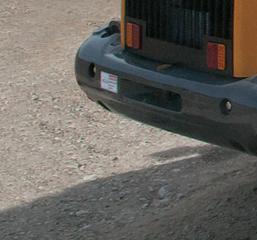


COLUSA
1960 Highway y 20 Colusa, CA 95932
Phone: (530) 458-216
DIXON
793 N First Street Dixon A95620
( , CA 9
Phone: (9916) 649-00 DOS PALOS 2173 Blossom Street Dos Palos, CA 93620
Phone: (209) 392-216
S. State Highway y Merced, CA 95341 Phone: (209) 383-58
2535 Ellis Street
Redding, C 96001 Phone: (530) 245-9000
STOCKTON
827 Nort Teehama St Willows, CA 95988 Phone: (530) 934-3382
YUBA CITY
1340 W. Charter Way y Stockton,C 95206 ,C
Stockton, C 9 Phone: (209) 944-5500
STRATTFORD
20280 Main St. Stratford, CA 93266
Phone: (559) 947-3301 TURLOCK
1215 West Glenwoo Avve Tuurlock, C 95380-5703
Phone: (209) 634-1777
3056 Colusa Highway y YubaCity CA95993


















HARRISBURG 230 Sommerville Avvenue Harrisburg, O 974446 Phone: (541) 995-2262
HILLSBORO
185 W Main St. Ext. Hillsboro,O 97123
905 Rick Pho
Rickreall Road reall, OR 97371 ne: (503) 363-2332
36 NW A Street Madras, OR 977441 Phone: (541) 475-2253 Pho odburn, O one: (503) 981-0151 NSTR



